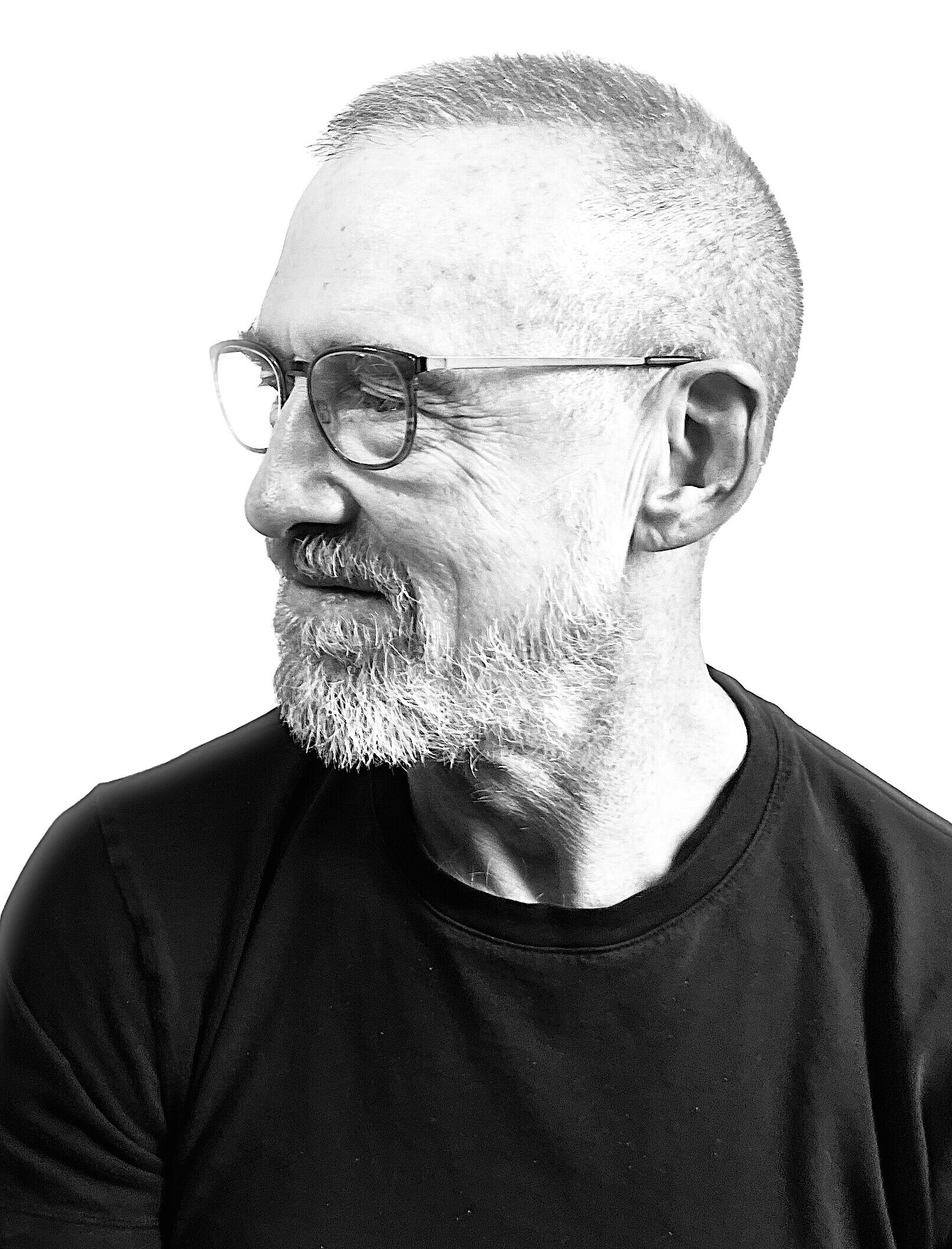William Forsythe

William Forsythe (1949) has been working as a choreographer for over 50 years. His works are known for having detached the practice of ballet from identification with the classical repertoire and transformed it into a dynamic art form of the 21st century. Forsythe's profound interest in the organizational principles of choreography has led him to realize a broad spectrum of projects in the fields of installation, film, and internet-based knowledge development.
Forsythe grew up in New York and began his training with Nolan Dingman and Christa Long in Florida. He danced with the Joffrey Ballet and later with the Stuttgart Ballet, where he became the resident choreographer in 1976. Over the next seven years, he created new works for the Stuttgart ensemble and ballet companies in Munich, The Hague, London, Basel, Berlin, Frankfurt am Main, Paris, New York, and San Francisco.
In 1984, he began his 20-year tenure as the director of Ballet Frankfurt, where he created works such as Artifact (1984), Impressing the Czar (1988), Limb’s Theorem (1990), The Loss of Small Detail (1991), A L I E / N A(C)TION (1992), Eidos:Telos (1995), Endless House (1999), Kammer/Kammer (2000), and Decreation (2003).
After the dissolution of Ballet Frankfurt in 2004, Forsythe formed a new ensemble, The Forsythe Company, which he led from 2005 to 2015. With this ensemble, he created works such as Three Atmospheric Studies (2005), You made me a monster (2005), Human Writes (2005), Heterotopia (2006), The Defenders (2007), Yes we can’t (2008/2010), I don’t believe in outer space (2008), The Returns (2009), and Sider (2011). Forsythe's works from this period were exclusively developed and performed by this new company, while his earlier works occupy a central place in the repertoire of practically all major ballet ensembles worldwide, such as the Mariinsky Ballet, New York City Ballet, San Francisco Ballet, National Ballet of Canada, Semperoper Ballet Dresden, Royal Ballet Covent Garden, and Ballet de l’Opéra de Paris.
In recent years, Forsythe has created works for the Paris Opera Ballet (Blake Works I, 2016), English National Ballet (Playlist (Track 1,2), 2018), Boston Ballet (Playlist (EP), 2019), A Quiet Evening of Dance (2018) produced by Sadler’s Wells Theatre (London), and The Barre Project (Blake Works II) for the digital space.
Forsythe and his ensembles have received awards such as the New York Dance and Performance «Bessie» Award (1988, 1998, 2004, 2007) and the Laurence Olivier Award from the City of London (1992, 1999, 2009). In 1999, Forsythe was appointed Commandeur des Arts et des Lettres by the French government. Additionally, he has been awarded the Hessischer Kulturpreis (1995), the Bundesverdienstkreuz (1997), the Wexner Prize (2002), the Golden Lion of the Venice Biennale (2010), and the German Theatre Prize Der FAUST for his lifetime achievement (2020).
Forsythe has developed architecture/performance installations as commissioned works for architect/artist Daniel Libeskind (Groningen, 1989), ARTANGEL (London, 1997), Creative Time (New York, 2005), and the SKD – Staatliche Kunstsammlungen Dresden (2013, 2014). Among these works, referred to by Forsythe as «Choreographic Objects,» are White Bouncy Castle (1997), City of Abstracts (2000), Nowhere and Everywhere at the Same Time No. 2 (2013), Black Flags (2014), Underall (2017), and Unsustainables (2019). His performance, film, and installation works are exhibited in numerous museums and exhibitions, including the Whitney Biennial (New York, 1997), Louvre Museum (2006), Pinakothek der Moderne (Munich, 2006), Tate Modern (London, 2009), MoMA (New York, 2010), Venice Biennale (2005, 2009, 2012, 2014), MMK – Museum für Moderne Kunst (Frankfurt am Main, 2015), the 20th Biennale of Sydney (2016), ICA Boston (2011, 2018), Museum Folkwang (2019), Museum of Fine Arts, Houston (2020), and Kunsthaus Zürich (2021).
In collaboration with media specialists and educators, Forsythe develops new, innovative approaches to dance documentation, research, and education. His CD-ROM «Improvisation Technologies: A Tool for the Analytical Dance Eye,» developed in 1994 in collaboration with the ZKM Center for Art and Media Karlsruhe, is used worldwide in professional companies, dance schools, universities, postgraduate training for architects, and schools. In 2009, Synchronous Objects for One Flat Thing, reproduced was introduced, a digital, web-based score developed in collaboration with Ohio State University. It demonstrates the organizational principles of choreography and illustrates how they can be used in other disciplines. Synchronous Objects was the pilot project within Forsythe's "Motion Bank," a research platform for the creation and exploration of digital dance scores in collaboration with guest choreographers.
In 2002, Forsythe was a founding mentor in dance for the Rolex Mentor and Protégé Arts Initiative. He is an honorary member of the Laban Centre for Movement and Dance in London and an honorary doctor of the Juilliard School in New York.